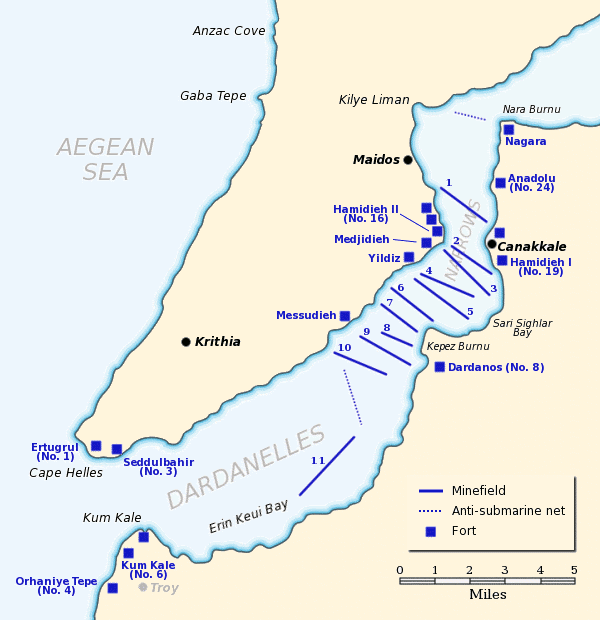It came down to a choice between Britain and Germany. At this time, Germany was the logical choice as they were eager for the position, geographically, and were willing to improve the Turkish army . But the problem was that Germany was hated at this time by the turkish and according to Lewis Einstien, the Special Minister of the American Embassy in Turkey, the Turkish preferred the English to all other foreigners. England was a wealthy empire, she had command of the sea thanks to her advanced navy and she had France and Russia on her side who were both wealthy countries. The presence of Russia in the alliance, however, was an obvious set back in the decision since Russia was a traditional enemy of the Ottoman Empire. Still, the Turks proposed an Anglo-Turkish alliance. However, the proposal was refused by the British. And so, by August 1914, things had drifted into the Germans favour.
On August 2, a secret alliance was formed between the Ottoman Empire and Germany. This alliance was directed against Russia.
German officers, technicians and instructors began to appear in Constinople. They took control of the munition factories in the capital , they manned the guns along the Bosphorus and Dardenelles, and they reorganised the Turkish infantry. On October 30 the Russian, British and French Ambassadors in Constantinople delivered a twelve hour ultimatum to the Turkish Government. When it went unanswered they left the country and hostilities began the next day. The Ottoman Empire was now in the war as an allie of the Germans.
The British forces needed to find a way to break the German lines. The British empire thought that their superior naval rescources would be the answer to this problem. Winston Churchill, who was the First Lord of the Admiralty, suggested several strategies that used Britians superior sea power. One of these strategies was an assault on the Dardanelles. The Dardanelles is a fifty kilometre long narrow strait that seperates the Aegean sea and the sea of Marama. It Is 50 Kilometres long and is less than 2 kilometres wide at the narrowest point. This section of the Dardanelles is called the Narrows. The aim was to send a fleet of warships through the strait into the Sea of Marama and threaten Constantinople (now Istanbul), which was the capital of the Ottoman Empire. The city guarded the Bosphorus sea, which is a narrow waterway that leads to the black sea.The city resided on the shores of the sea of Marama so it was open to attack from the ocean.
Winston Churchill quickly ordered the bombardment of the forts guarding the Narrows. This operation formally declared war on the Ottoman Empire. This made the Turks realize the threat that the British Empire imposed and quickly improved their defences around the Dardenelles which included laying mine fields and constructing forts that consealed large artilary weapons.
A British and French fleet that included 18 battleships, attempted to force its way through to Constantinople by taking on the forts at long range. Three capital ships were lost and three crippled. The naval commanders came to the conclusion that they could not force their way through the Dardanelles unless troops were first sent to occupy the Gallipoli Peninsula and destroy the Turkish guns guarding the Dardanelles. Planning for the landing of troops on Gallipoli commenced
As early as November 1914, Winston Churchill had suggested an attack on Gallipoli but his fellow members on the War Council said that Churchill's plan was too risky and so they rejected it. The stalemate went on and the actions the council needed rethink their position.
The Turks were advancing northward in the Caucasus, heading for Russia. The Russians called for assistance but the Russian forces soon drove the turks back. These events changed the minds of the War Council and so the War Council approved proposal on January 15 1915.
 |
| This map shows the Turkish defences that the Allies would have to pass to get to Constinople.(This map is found at http://en.wikipedia.org/wiki/File:Dardanelles_defences_1915.png ) |


